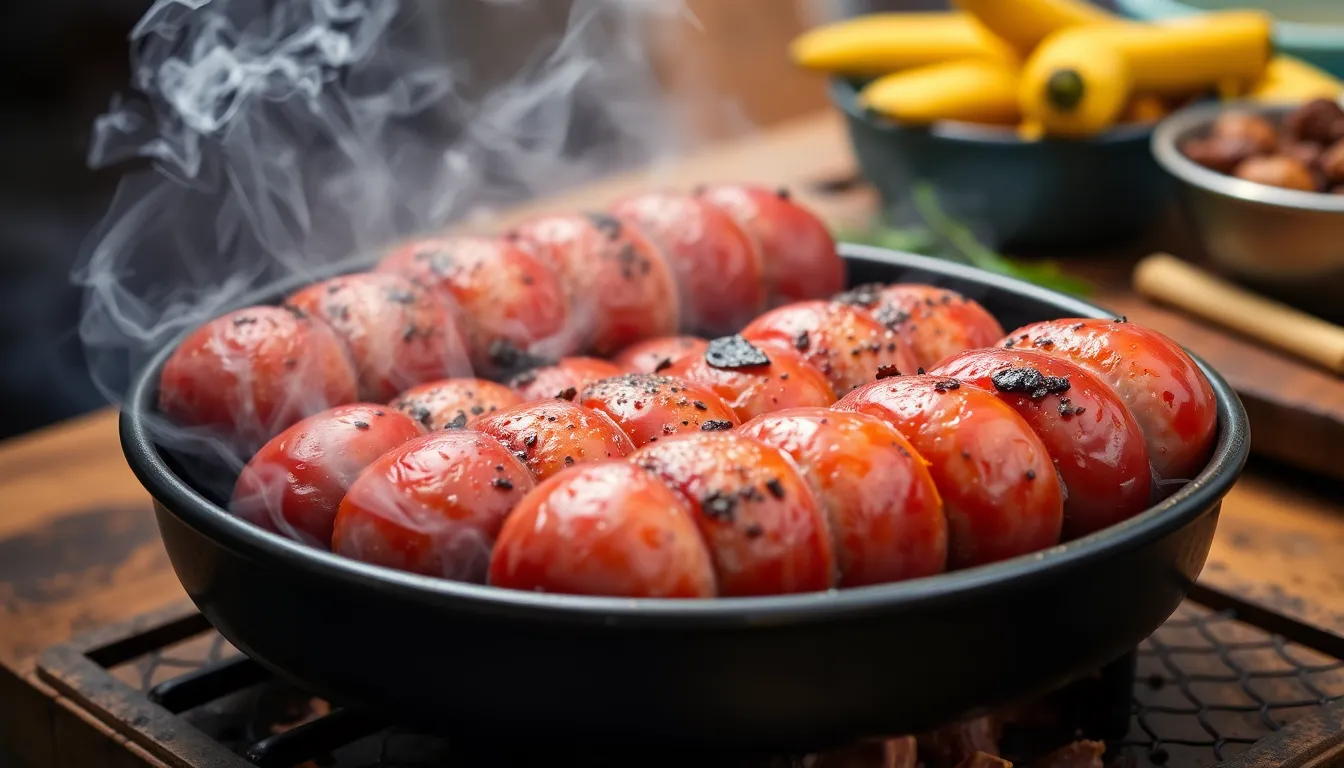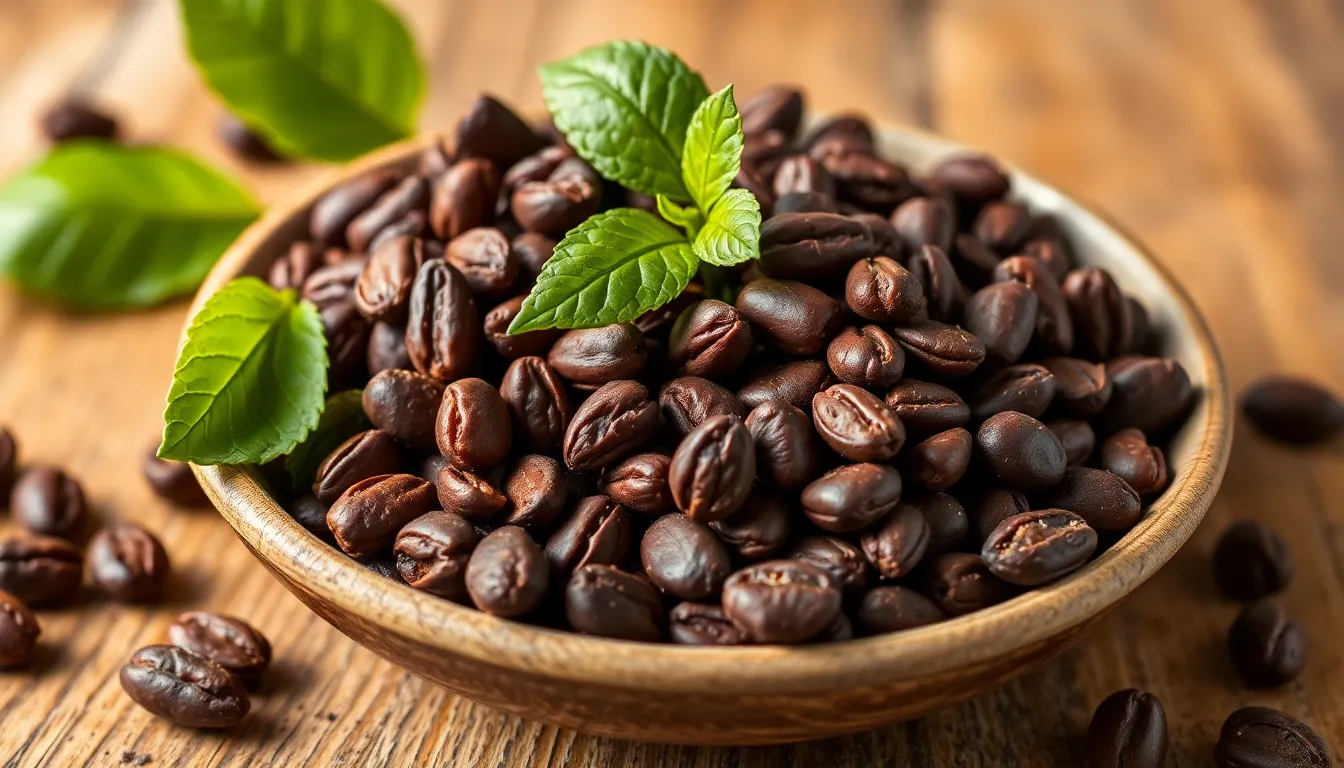The Ultimate Guide to Smoking Sausages at Home
Introduction
Smoking sausages at home is not just a culinary skill; it’s an art form that brings out rich flavors and adds depth to your meals. The process of smoking infuses the meat with aromatic compounds from wood, creating a sensory experience that can make any dish stand out. Beyond flavor, home-smoking serves as an excellent method for preservation, allowing you to enjoy your sausages long after they are made.
In this ultimate guide, you will learn everything you need to know about smoking sausages at home—from understanding the different types of sausages suitable for smoking to selecting the right equipment and mastering the smoking process. By the end, you’ll be ready to impress friends and family with your homemade smoked sausages.
Section 1: Understanding the Basics of Sausage Smoking
1.1 What is Smoking?
Smoking is a cooking technique that has been used for centuries, dating back to when our ancestors discovered that exposing meat to smoke could not only enhance its flavor but also preserve it for longer periods. The smoke from burning wood or other materials contains various compounds that contribute to the unique taste, aroma, and color of the food.
There are two main methods of smoking:
- Hot Smoking: This involves cooking the meat at higher temperatures (typically between 165°F to 185°F), which simultaneously cooks and flavors the food. Hot smoking is commonly used for sausages, as it provides both a smoky taste and a fully cooked product.
- Cold Smoking: This method occurs at lower temperatures (below 85°F) and is typically used for flavoring rather than cooking. Cold smoking is suitable for cured sausages and can enhance flavors without cooking the meat.
1.2 Types of Sausages Suitable for Smoking
When it comes to smoking sausages, not all types are created equal. Here’s a breakdown:
- Fresh Sausages: These are uncooked sausages that can be smoked to add flavor and preserve them. Examples include bratwurst and Italian sausage.
- Cured Sausages: These sausages are preserved through curing agents and can benefit from cold smoking. Examples include salami and pepperoni.
For beginners, fresh sausages like bratwurst or kielbasa are the best choices to start with. They’re relatively easy to make and smoke, providing a rewarding experience.
Section 2: Essential Equipment for Smoking Sausages
2.1 Smokers – Types and Features
The first step in smoking sausages is selecting the right smoker. Here’s an overview of popular smoker types:
- Electric Smokers: Easy to use, consistent temperature control, ideal for beginners.
- Charcoal Smokers: Offers a more authentic smoky flavor, requires more skill to manage temperature.
- Wood Smokers: Provides a traditional smoking experience, but requires knowledge of wood types and management.
Each type has its pros and cons:
- Electric: Pros: Convenient, requires less monitoring; Cons: Less smoky flavor compared to wood and charcoal.
- Charcoal: Pros: Excellent flavor; Cons: More labor-intensive.
- Wood: Pros: Versatile flavor profiles; Cons: More difficult to control temperature.
2.2 Other Essential Tools
In addition to a smoker, you’ll need several essential tools:
- Sausage Stuffer: To fill casings with your sausage mixture.
- Meat Grinder: For grinding your meat and fat to the desired consistency.
- Thermometer: A reliable thermometer ensures your sausages are cooked to the perfect internal temperature.
- Butcher’s Twine: Useful for tying off sausage casings.
2.3 Recommended Accessories
Accessories can enhance your smoking experience:
- Wood Chips: Different types impart unique flavors; some favorites include hickory, applewood, and mesquite.
- Water Trays: Adding a water tray in your smoker helps to regulate humidity and avoid drying out the sausages.
HTML Table: Comparison of Wood Chips for Smoking
| Wood Type | Flavor Profile | Best Sausages |
|---|---|---|
| Hickory | Strong, smoky | Bacon, Pork sausages |
| Applewood | Mild, fruity | Chicken, Turkey sausages |
| Mesquite | Bold, earthy | Beef sausages |
| Cherry | Sweet, subtle | Game meats, Pork sausages |
Section 3: Preparing Sausages for Smoking
3.1 Selecting the Right Meat
The foundation of great sausages lies in choosing the right meat. Here are some best cuts:
- Pork shoulder: Ideal for its balance of meat and fat.
- Beef brisket: Rich flavor and great for beef sausages.
- Chicken thighs: Juicy and flavorful for poultry sausages.
Fat content is crucial; aim for a meat-to-fat ratio of around 70:30 for juicy, flavorful sausages.
3.2 Seasoning and Flavoring
Seasoning is what brings your sausages to life. Common spices and herbs include:
- Salt
- Pepper
- Garlic powder
- Paprika
- Fennel seeds
- Thyme
Experiment with creating your own blends to find the flavors you love best. Remember, the key is to season generously, as the smoking process can mellow flavors.
3.3 Stuffing the Sausages
Stuffing sausages can seem daunting, but it’s manageable with the right steps:
- Prepare your casings by soaking them in water to make them pliable.
- Fill your sausage stuffer with the meat mixture.
- Slide the casing onto the stuffer nozzle and push it down, leaving a few inches at the end.
- Carefully fill the casing, avoiding air pockets by gently squeezing the mixture down as you go.
- Once filled, twist the sausages into links and tie off the ends with butcher’s twine.
Tip: To avoid air pockets, gently pinch the casing as you fill it, allowing air to escape.
Section 4: The Smoking Process
4.1 Preparing the Smoker
Before smoking, you need to prep your smoker:
- Set up your smoker according to its instructions.
- Add your chosen wood chips to the smoker box or tray.
- Preheat the smoker to your desired temperature (typically around 165°F to 185°F for sausages).
Monitoring temperature is crucial for achieving the perfect smoked sausage.
4.2 Smoking the Sausages
Once your smoker is ready, follow these steps to smoke your sausages:
- Arrange the sausages on the smoker racks, ensuring they’re not touching.
- Close the smoker and maintain a consistent temperature, checking it regularly.
- Smoke the sausages until they reach an internal temperature of 160°F for pork or 165°F for poultry.
Typical smoking times can range anywhere from 2 to 4 hours, depending on the sausage type and smoker used.
4.3 Finishing Touches
Knowing when your sausages are done is crucial. Use a meat thermometer to check internal temperatures:
- Pork sausages: 160°F
- Poultry sausages: 165°F
Once done, let the sausages cool at room temperature. If you plan on storing them, refrigerate or freeze them to keep them fresh.
Section 5: Troubleshooting Common Issues
5.1 Flavor Problems
If your sausages turn out overly salty or bland, consider the following:
- For overly salty sausages, add a bit of sugar to balance the flavors or dilute with unsalted meat for future batches.
- If they’re bland, experiment by increasing the amount of spices in your seasoning blend.
5.2 Texture Issues
Texture problems can also arise:
- If your sausages are dry, ensure you’ve used enough fat in your mixture.
- If they’re mushy, try grinding the meat less or letting the mixture rest for a while before stuffing.
5.3 Smoking Problems
Temperature fluctuations can disrupt the smoking process. Here’s how to manage it:
- Use a quality thermometer to monitor the smoker’s temperature accurately.
- Make adjustments to the airflow (if applicable) to stabilize the heat.
Section 6: Serving and Enjoying Your Smoked Sausages
6.1 Presentation Ideas
Once your sausages are smoked to perfection, it’s time to serve them up! Here are some creative presentation ideas:
- Serve sausages on a wooden cutting board with an assortment of mustards and pickles.
- Slice sausages and serve them on skewers with grilled vegetables for a colorful platter.
- Pair smoked sausages with fresh bread, cheese, and a selection of condiments for a rustic charcuterie board.
Enjoy your sausages with family and friends, sharing the flavors and the stories behind your smoking journey!
Conclusion
Smoking sausages at home is both an enjoyable and rewarding process. With the right techniques, equipment, and a little experimentation, you can create mouthwatering sausages that will become the star of any meal. From understanding the basics to troubleshooting common issues, this guide equips you with everything you need to take your sausage smoking skills to the next level. So fire up that smoker and let the delicious adventure begin!




